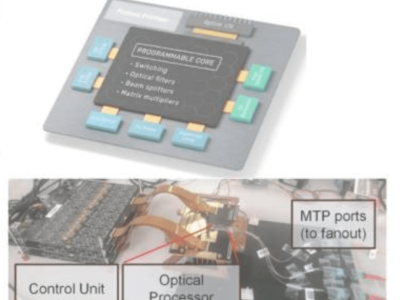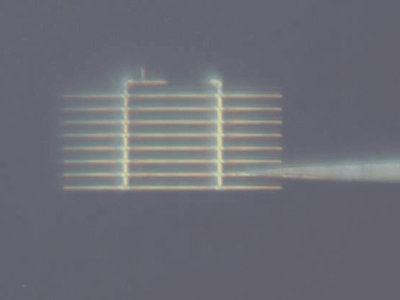
How MEMS-based displays enable always-on wearables
Would the display need to turn off every few seconds after being idle? What kind of content and usage patterns would have developed around hardware that offered a completely open channel of content flow right into the pocket (or wrist, but we’ll get to that) of a consumer?
Strangely enough, that movement toward a continuous flow of content has actually begun even with display-specific constraints ensconced. As connectivity through 3G, 4G and WiFi has become seemingly ubiquitous, so, too, has the computing prowess of our mobile devices. Sensors, chipsets, memory, display and power management are creating a highly contextual environment dictating how and which content is actually served.
All the inertia described above, however, is actually still stymied by that modern mobile buzzkill – the black screen of a display turned off. Because, you see, this problem has not yet been solved. Devices are still constrained by their least efficient components: chief among them is the display.
Modern displays (LCD or OLED and their variants) all must make certain tradeoffs. For the bright and colorful experience you want, you trade battery life and the ability to have that experience in brightly lit environments. While marginal improvements certainly continue to be hashed out in efficiency, the display still consumes upward (well upward in many cases) of 50% of the energy in a mobile device.
Of particular interest is how this plays out in the new wide-open landscape of wearable computing. Looking at this category strictly from the perspective of the display technologies therein, there are seemingly two distinct camps. One says you can have your bright indoor device in exchange for charging daily (at least) and limited visibility outdoors. The other says you can have your outdoor-readable display and days of battery life, but at the expense of some mix of interactivity, color and pixel density. This is particularly interesting because the margin for error in a smartwatch is small for two reasons.
First, a device worn on the body invokes a different consumer expectation. It should be thin and fashionable, of course, but from a technical perspective, it needs to be visible at a glance – indeed, always on – no matter where the user is. If the wearable screen is off, there is no appreciable difference than reaching into one’s pocket for their smartphone. And if the display is obscured by bright environmental light, like sunshine, always on is pointless.
This is not a foreign concept to consumers. We all encounter various types of passive content every day. In fact, the very real estate the smartwatch seeks to fill was previously occupied by a passive content display – the wrist watch. No buttons to push to activate the screen, just glance down and there is the information you need. The opportunity to leverage the great wave of contextually relevant data and serve it to the consumer in helpful and interesting ways is obviously the Holy Grail for the wearable and why most CE companies are clamoring to present their offering.
Second, and more simply, the device is just much smaller. Smaller screens, smaller batteries. If product managers have been pulling their hair out for years managing the delicate balance of power allocation for a 2100mAh battery on a smartphone, a 210mAh battery is going to really give them fits. A wholesale change needs to happen. There is simply nowhere to hide a bigger battery on a wrist-worn device; the componentry must get more efficient.
One solution, then, to unlocking the true potential of wearables and indeed the next generation of mobile experiences is a fundamentally different approach to the display component. A display that is reflective for great visibility even in the brightest of sunshine while being low power enough to enable days and days of usage while never going dark. This is, in a few words, the Qualcomm Mirasol display.
The fundamental technology behind the Mirasol-branded display offerings from Qualcomm is called Interferometric Modulation (IMOD). IMOD technology offers an answer to what ails the nascent wearable space.
The core underpinnings of the technology are based on the concept of optical interference. As one might observe in a soap bubble, when light passes through an optical resonant cavity, it reflects off both the outer and inner reflective surfaces. Whatever reflected wavelengths that are coming off both surfaces and that are in phase with each other are the color the cavity appears. Mirasol displays operate exactly the same way. An optical resonant cavity is constructed out of thin-films and through the use of MEMS (or indeed, as an example of MEMS), the cavity can be either opened or closed. When open, it is set either to red, green or blue and when closed, the cavity is black.
This unique approach to creating a color display is from where the differentiation of Mirasol displays is derived. Because only reflected light, in most instances, is required, the lion’s share of power consumed by most modern displays is not expended. Secondarily, Mirasol displays are bi-stable. This means that once an image is addressed to the display, near-zero power is consumed in holding that image in view. Essentially, once the mirrors are set in place, the constant refreshing of the content seen in LCD/OLED is not necessary, another significant savings in power.
The above description describes the current version of IMOD, commercially available in the Qualcomm Toq and soon in additional smart wearables – see figures 1 and 2.

Fig. 1: The Qualcomm Toq smartwatch.

Fig. 2: Qualcomm Mirasol display sub-pixel architecture, current generation.
In development, however, is the next generation of the technology.
Bucking the trend in all color displays to date – where a color matrix of RGB is required to address a wide gamut of colors – the next generation of Mirasol displays will use a single element to address each individual state of color. This single mirror IMOD (SMI) iteration of the technology is in early development now, but offers a revolutionary glimpse into the mobile display and consumer experiences of the future – see figure 3.

Fig. 3: Qualcomm Mirasol display sub-pixel architecture, next-generation single mirror (SMI).
Qualcomm has publicly demonstrated early prototype versions of this new SMI architecture Mirasol display. Demonstrated at SID 2013, the SMI architecture delivers 557ppi of resolution on a 4.7” demonstrator – see figure 4.

Fig. 4: Image of the single mirror IMOD demo from SID 2013.
While a vision of an always-on device may be borne out of the upcoming proliferation of smart wearable devices, the trend towards continuous consumption is well afoot. New and innovative UI and UX design centered on a vision of what will become individuals’ digital sixth sense is already being fueled by hardware and software development. This confluence of experience and consumer demand is bringing a new opportunity for the industry and will be best accelerated by innovative technology development in hardware like the Qualcomm Mirasol display.
About the author
Brian Gally is VP Product Management and Marketing at Qualcomm MEMS Technologies – www.qualcomm.com/mirasol
Related articles:
Wearables in cars – a long way to go for programmers
MediaTek goes wearable, Chinese and cheap
Six winners from the Wearable Technologies Innovation World
 If you enjoyed this article, you will like the following ones: don't miss them by subscribing to :
eeNews on Google News
If you enjoyed this article, you will like the following ones: don't miss them by subscribing to :
eeNews on Google News




